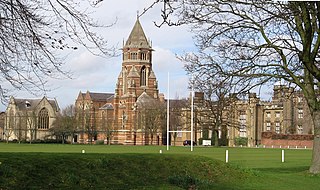
Rugby School is a public school in Rugby, Warwickshire, England.

Rupert Chawner Brooke was an English poet known for his idealistic war sonnets written during the First World War, especially "The Soldier". He was also known for his boyish good looks, which were said to have prompted the Irish poet W. B. Yeats to describe him as "the handsomest young man in England". He died of septicaemia following a mosquito bite whilst aboard a French hospital ship moored off the island of Skyros in the Aegean Sea.
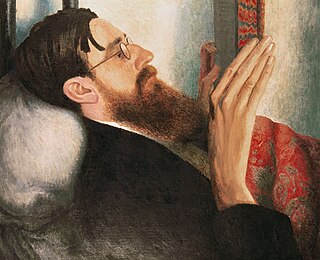
Giles Lytton Strachey was an English writer and critic. A founding member of the Bloomsbury Group and author of Eminent Victorians, he established a new form of biography in which psychological insight and sympathy are combined with irreverence and wit. His biography Queen Victoria (1921) was awarded the James Tait Black Memorial Prize.

Rugby is a market town in eastern Warwickshire, England, close to the River Avon. At the 2021 census, its population was 78,117, making it the second-largest town in Warwickshire. It is the main settlement within the larger Borough of Rugby, which had a population of 114,400 in 2021.

Duncan James Corrowr Grant was a Scottish painter and designer of textiles, pottery, theatre sets, and costumes. He was a member of the Bloomsbury Group.

Vanessa Bell was an English painter and interior designer, a member of the Bloomsbury Group and the sister of Virginia Woolf.

Henry Percy, 9th Earl of Northumberland, KG was an English nobleman. He was a grandee and one of the wealthiest peers of the court of Elizabeth I. Under James I, Northumberland was a long-term prisoner in the Tower of London, due to the suspicion that he was complicit in the Gunpowder Plot. He is known for the circles he moved in as well as for his own achievements. He acquired the sobriquet The Wizard Earl, from his scientific and alchemical experiments, his passion for cartography, and his large library.

Warwick School is a public school in Warwick, England.
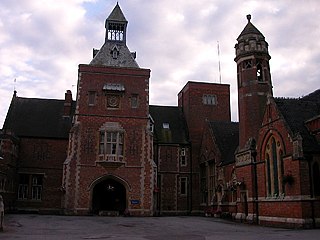
Bilton Grange is a preparatory school located in Dunchurch, near Rugby, Warwickshire. The present headmaster is Gareth Jones.

James Beaumont Strachey was a British psychoanalyst, and, with his wife Alix, a translator of Sigmund Freud into English. He is perhaps best known as the general editor of The Standard Edition of the Complete Psychological Works of Sigmund Freud, "the international authority".
Events from the 1550s in England. This decade marks the beginning of the Elizabethan era.
Frances Spalding is a British art historian, writer and a former editor of The Burlington Magazine.
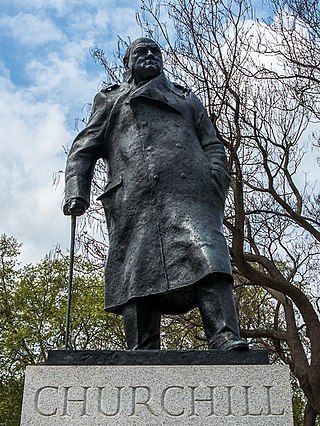
Ivor Roberts-Jones was an English sculptor of Welsh descent on both his parents' sides. He is best known for his sculpted heads of notable people such as Yehudi Menuhin and George Thomas, Viscount Tonypandy.

Hon. Noël Olivier Richards was an English medical doctor. She was born on Christmas Day 1892, hence her name, as the daughter of Sydney Olivier, 1st Baron Olivier and Margaret Cox. A cousin was the actor Sir Laurence Olivier. She attended the progressive Bedales School in Petersfield, Hampshire. Later she was a member of both the Bloomsbury Group and Rupert Brooke's group of Cambridge Neopagans. For a while, she and Brooke were in a relationship.
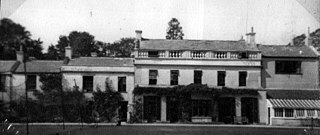
Hill Brow Preparatory School for Boys was a small English preparatory school, initially based in Eastbourne, East Sussex, but subsequently relocated to Brent Knoll in Somerset as part of the evacuation of civilians that took place during World War II.
The Artists' Suffrage League (ASL) was a suffrage society formed to change parliamentary opinion and engage in public demonstrations and other propaganda activities.
The Bloomsbury Group plays a prominent role in the LGBT history of its day.

Katherine Laird "Ka" Cox, the daughter of a British socialist stockbroker and his wife, was a Fabian and graduate of Cambridge University. There, she met Rupert Brooke, becoming his lover, and was a member of his Neo-Pagans. She was also a friend of Virginia Woolf and the Bloomsbury Group. During World War I she worked with the Serbian Relief Fund, assisting refugees in Corsica. After the war, she married the Labour politician Will Arnold-Forster, and became the first woman magistrate in Cornwall. She and her husband were instrumental in founding Gordonstoun School in Scotland in 1934. Her sudden death at the age of 51 fuelled speculation of involvement in the occult.
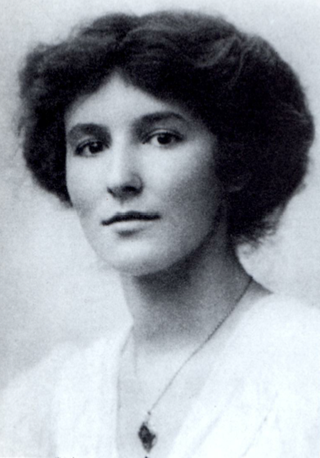
Brynhild Olivier was one of four sisters noted for their progressive ideas, beauty and associations with both Rupert Brooke and his Cambridge circle of Neo-pagans, as well as the Bloomsbury Group. Born in Bloomsbury, London, Brynhild Olivier was raised and home schooled in Jamaica and Limpsfield, Surrey. Although she had no higher education, she became involved in cultural activities at Cambridge University, through her sisters, who were undergraduates there.